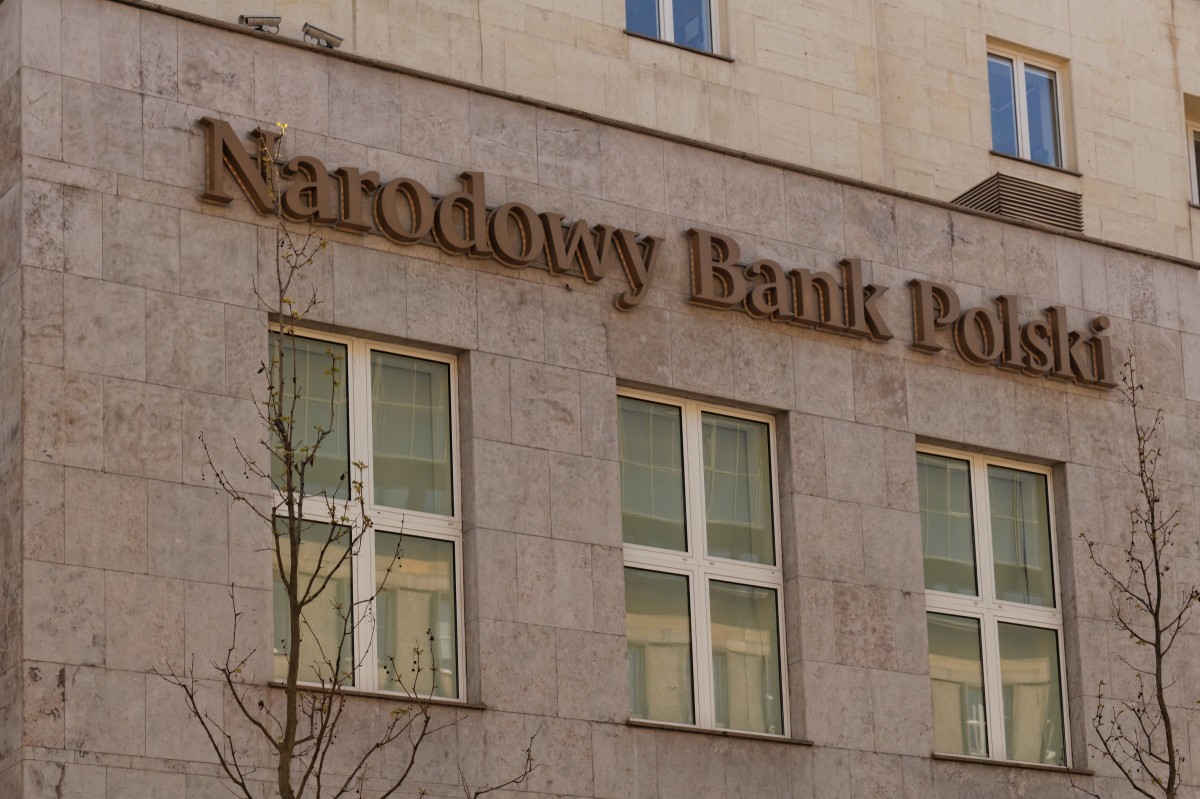National Bank Of Poland Keeps Rates Flat, Waits For Disinflation To Kick In
The Monetary Policy Council (MPC) left interest rates unchanged (the main rate is still 6.75%), in line with our and the market's expectations. The post-meeting statement is similar in tone to the one released after the January meeting.

National Bank of Poland in Warsaw
The new elements in the post-meeting statement are: (1) falling commodity prices and (2) improvements in global supply chains. The Council reiterated its comments about high core inflation and second-round effects, which sounds hawkish, but this is probably a minority voice. The MPC majority is looking mainly at CPI and not the persistence of core inflation.
The Council is prepared for a further increase in inflation in the short term (January and February) due to, among other things, the restoration of VAT rates on energy (electricity, gas, heating) and fuel to 23% and the low base from last year, when the anti-inflation shield was introduced. Also, we see anecdotal evidences that New Year price hikes were significant, although many producers have tried to smooth the process by introducing short-term promotions and postpone price adjustments to Easter when consumption is growing seasonally. According to our estimates, in January CPI will be around 18% year-on-year, and in February it will rise to around 20% YoY.
The pace of disinflation, starting from the second quarter, will be crucial for further MPC actions. Therefore we expect the MPC to delay a formal announcement of the end of the tightening cycle, at least until the March meeting, when the National Bank of Poland will also present its latest macroeconomic projection.
The market is invariably pricing in rate cuts before the end of 2023. We see a couple of compelling arguments against rate cuts in 2023: (1) history shows that lowering inflation from 10% to 2.5% (NBP target) is much more difficult than from 20% to 10%, (2) Poland has a very strong labour market and magnitude of wage hikes at the beginning of 2023 is one of the highest in the last two decades, (3) a low demand barrier to prices hikes, which means still strong second-round effects, and (4) the overhang of high energy prices, which are temporarily frozen in 2023.
However, given the MPC's current reaction function, we could see the possibility of small rate cuts in the second half of the year, as external disinflationary processes intensify (big improvements in supply chains, falling commodity prices, etc), which would strongly reduce the headline CPI inflation globally and in Poland. Also, the majority of the MPC is looking mainly at: (1) CPI inflation (and its decrease from 20% YoY in February to about 10% YoY or lower in December) and (2) aims to ease the scale of the ongoing economic slowdown. The majority of Council has put less emphasis on the persistence of core inflation. Bank President Glapiński will hold a press conference tomorrow.
More By This Author:
India: Reserve Bank Hikes And Keeps Tightening Stance
Rates Spark: The Range Is Your Friend
The Commodities Feed: Ceyhan Flows Ordered To Restart
Disclaimer: This publication has been prepared by ING solely for information purposes irrespective of a particular user's means, financial situation or investment objectives. The information ...
more


